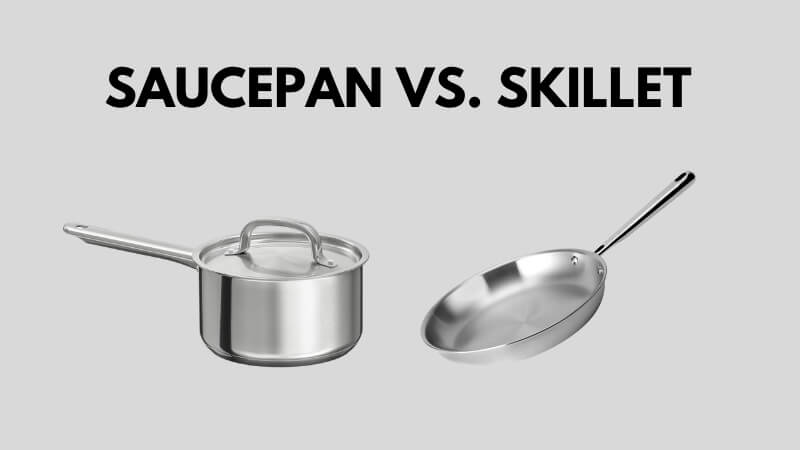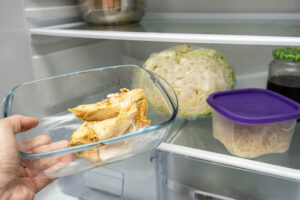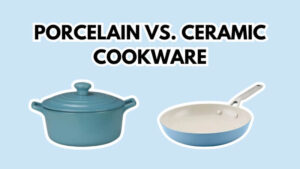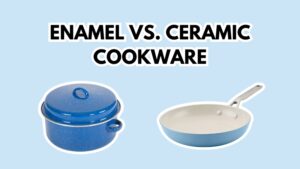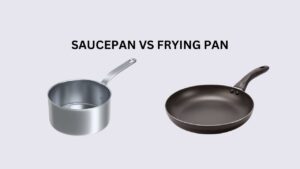Two kitchen staples that many of us (me too) often confuse are the saucepan vs skillet. While they may look similar at first glance, they serve very different purposes. They also look quite different from one another. In this article, I will share how to distinguish each of them, and how to use them in the kitchen.
What is A Saucepan?
A saucepan is basically a miniature stockpot or casserole. Its height is at least 2/3 as tall as it is wide, having one long handle and a possible second, short, helper handle. A cookware has straight sides and a relatively small cooking surface, making it ideal for cooking liquids.
It comes in various sizes, usually ranging from 1 to 4 quarts, allowing it to be used for different types of cooking tasks or the number of people in your family. It can be made from materials like stainless steel, aluminum, and copper.
Here is a picture of a saucepan:
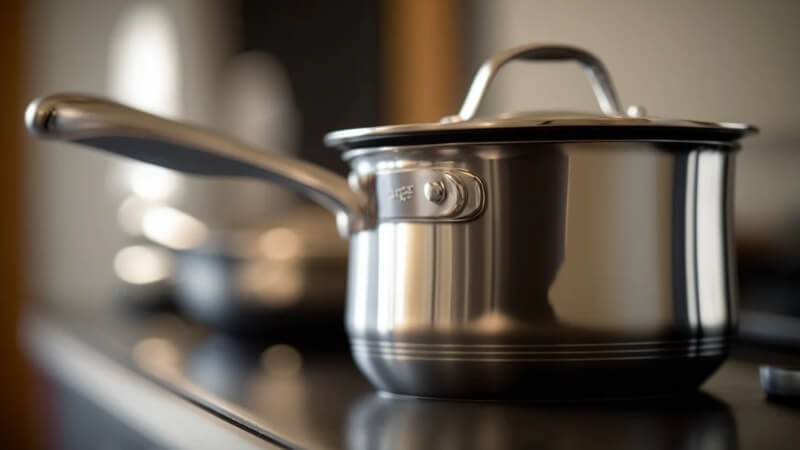
What is A Skillet?
A skillet is a cookware with low, sloped sides and a flat cooking surface, making it ideal for dry-heat cooking techniques such as frying, sautéing, searing, and browning. The design of a skillet makes it easy to stir, flip, and toss ingredients.
Skillets come in various materials, including cast iron, stainless steel, aluminum, and non-stick coatings, each offering different benefits. Cast iron skillets, for example, are excellent for heat retention and can go from stovetop to oven, while non-stick skillets make cooking and cleaning easier. That being said, skillets can be used for a wide range of dishes.
Here is a picture of a skillet pan:
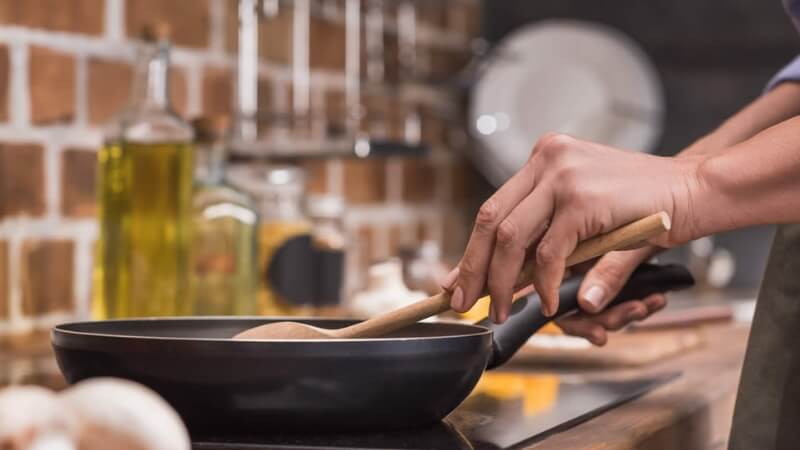
Compare Saucepan and Skillet in Details
| Saucepan | Skillet | |
|---|---|---|
| Design | Tall, straight sides with a smaller cooking surface and a long handle. | Flat surface with low, sloped sides and a long handle. |
| Best For | Simmering sauces, boiling pasta, cooking soups, stews, and grains. | Searing, frying, sautéing, browning, and cooking quick, dry-heat meals. |
| Heat Distribution | Even heat retention | Heats up quickly and ideal for high-heat cooking |
| Moisture Retention | Comes with a lid to trap moisture and heat for even cooking | Open design allows moisture to evaporate, perfect for crisping food |
| Ease Of Use | Ideal for liquid-heavy recipes and dishes requiring slow cooking | Great for flipping, tossing, and stirring food with ease |
Purposes
What is a saucepan used for? Primarily liquid-based cooking! Its tall, straight sides and smaller cooking surface are great for tasks such as boiling water, simmering sauces, preparing soups, or cooking grains. The depth of the saucepan helps prevent spills and splashes, so it is suitable for recipes that require longer cooking times or larger quantities of liquid.
In contrast, a skillet is designed for dry-heat cooking and quick-cooking. Its flat surface and sloped sides make it ideal for frying, sautéing, searing, stir-frying, and browning ingredients. Skillets allow moisture to evaporate quickly, which is essential for achieving a crisp texture. In addition, because they are easy to stir, flip, and toss food, skillets are fantastic for one-pan meals.
How to clean?
After cooking with a saucepan or skillet, my tip is to let it cool down completely to avoid any damage caused by sudden temperature changes. Once it has cooled, rinse it with warm water to remove any remaining food particles. Then, apply a small amount of mild dish soap to a non-abrasive sponge or soft cloth and gently scrub the surface. After cleaning, rinse thoroughly and dry the pan immediately with a clean towel, or let it air dry in a well-ventilated area to prevent mold and ensure longer durability.
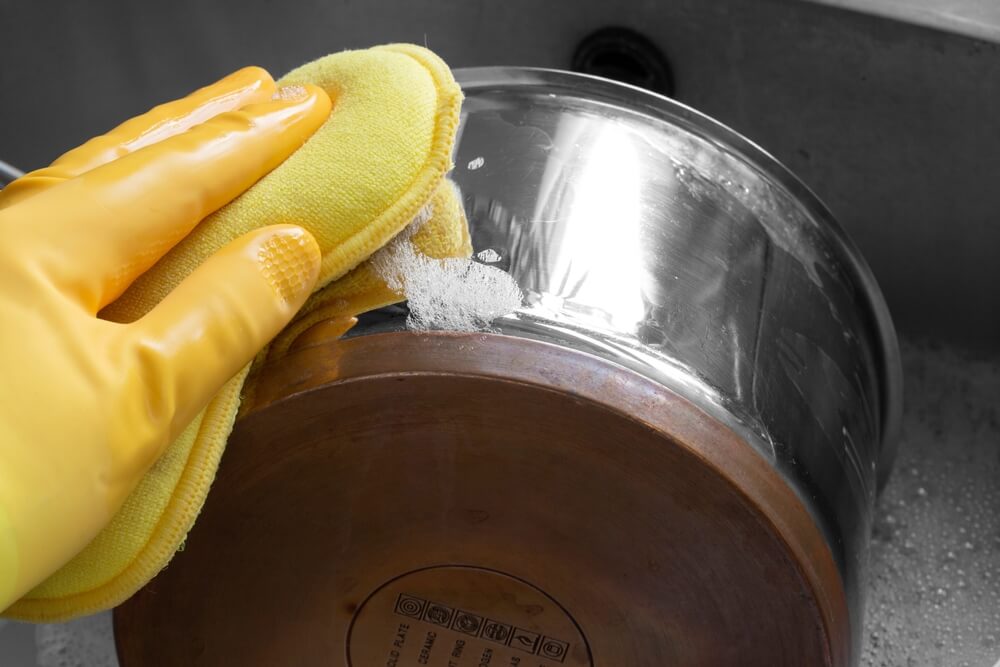
One important thing to remember is to avoid soaking the pan, especially cast iron for extended periods, as this can cause damage.
For stubborn stains often found on pans used for deep frying, first allow the pan to cool, then use a kitchen roll to wipe off all excess oil. Soaking the pan briefly can help loosen the residue, but be sure not to use abrasive scrubbers, as they may cause scratches. This is the method I regularly use to keep my pans clean and extend their lifespan, especially non-stick ones.
Which is Right for You?
Choosing between a saucepan vs skillet or saucepan vs frying pan depends on the type of cooking you do most often and the kinds of meals you prefer to prepare.
If you are preparing recipes that involve liquids, a saucepan is the better option. Its design helps contain liquids and prevent them from splashing. The lid that typically accompanies a saucepan is also useful, helping to retain heat and moisture during cooking. Any food you make will cook evenly and retain flavor. If you enjoy making food in large batches, you will also love the saucepan because of its capacity and versatility.
On the other hand, a skillet is ideal when you need to cook food that benefits from direct contact with high heat. Its shallow surface makes it the perfect choice for tasks like searing meats, sautéing vegetables, or even making pancakes. The low sides of a skillet allow for easy flipping and stirring, which makes it versatile for various dry-heat cooking techniques.
For most kitchens, it is important to have both a saucepan and a skillet to cover all your cooking needs. Having both ensures you are prepared for any recipe. However, if you need to choose just one, recalling the saucepan vs. skillet differences will help you choose the right one for your needs.
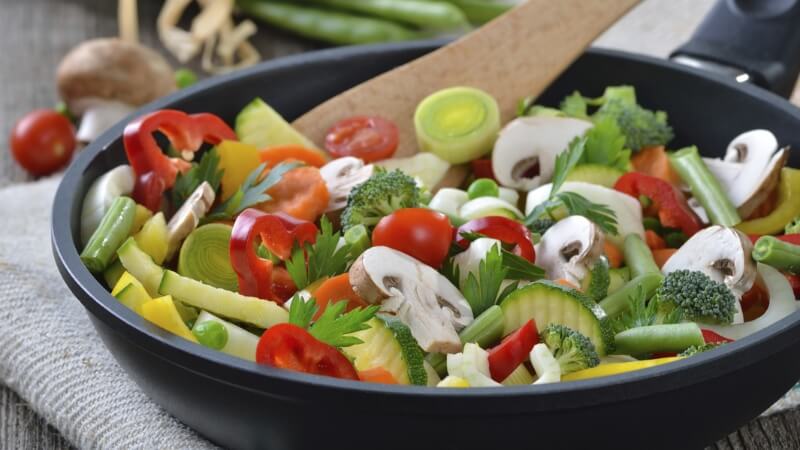
Closing Thoughts
The saucepan and skillet each cater to different cooking needs. The former is perfect for liquid-based dishes, such as soups, sauces, and pastas. It is the ideal choice for those who often cook with liquids or prepare larger quantities of food. The latter excels in dry-heat cooking methods, such as frying, searing, and sautéing.
So, the right choice for you will depend on your cooking style and the types of meals you prepare most often. Nevertheless, if you can afford it, having both in the kitchen gives you the versatility to tackle a wide variety of cooking tasks.

